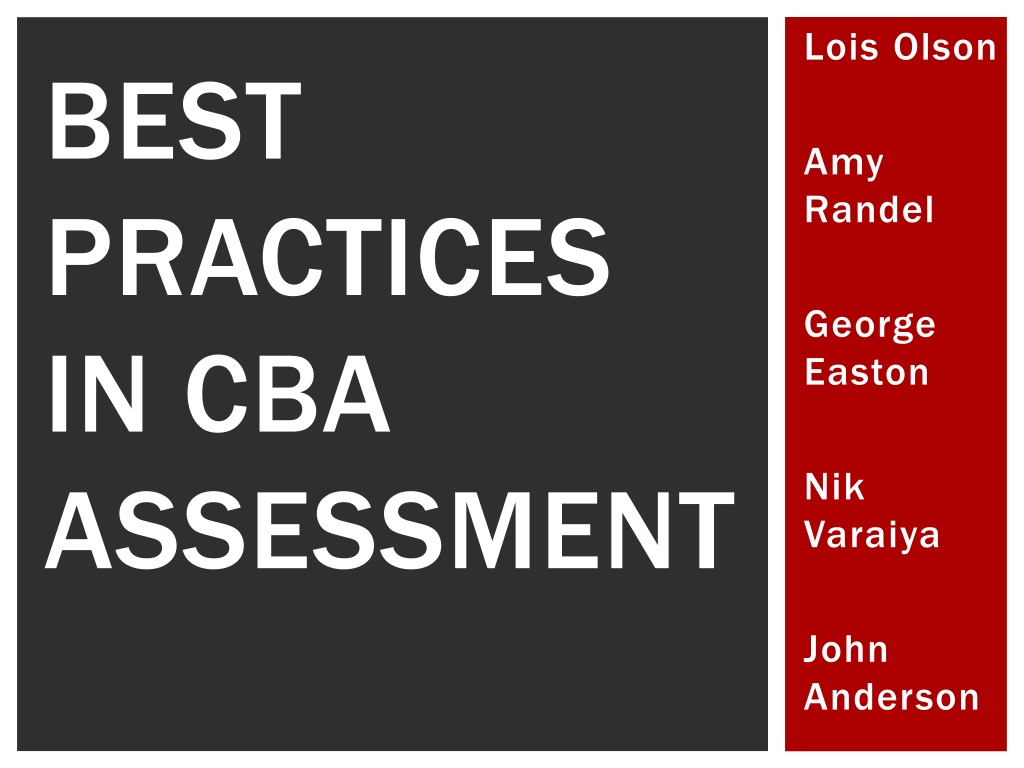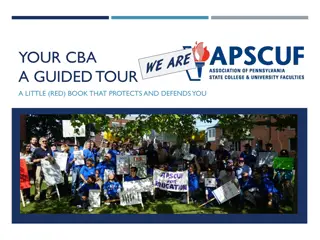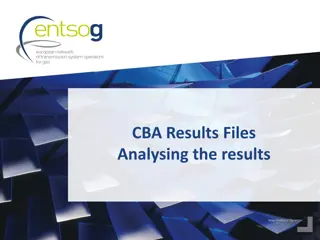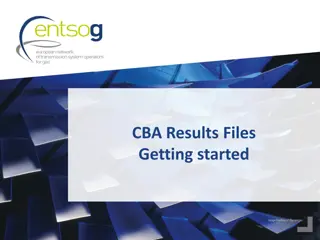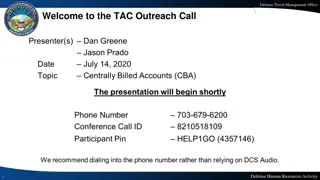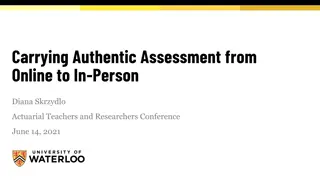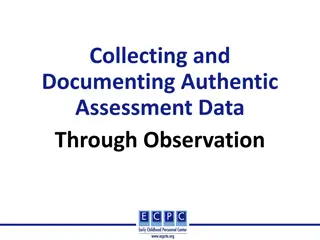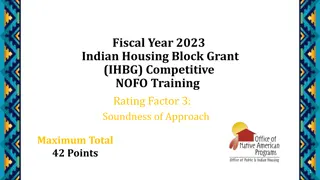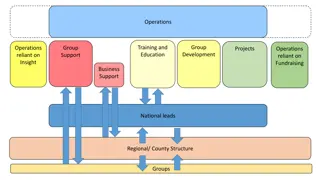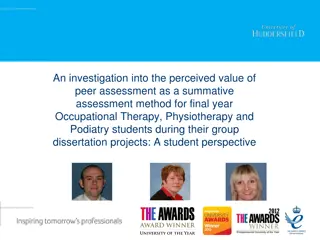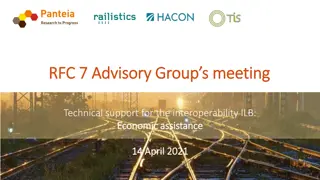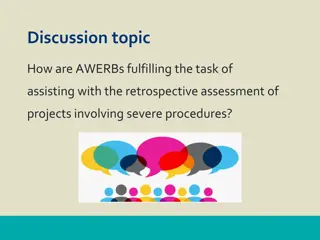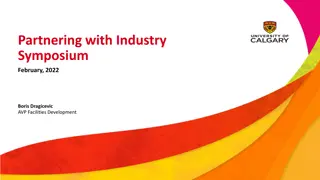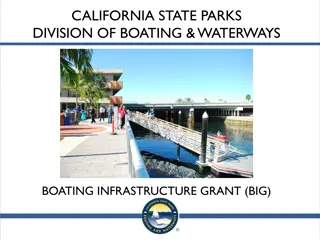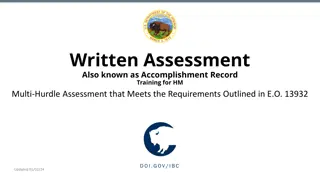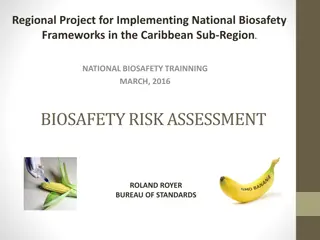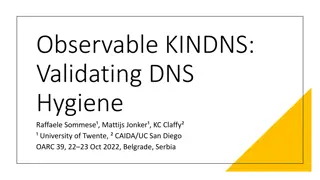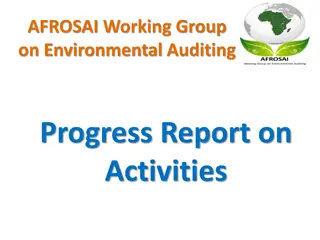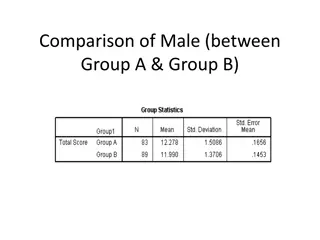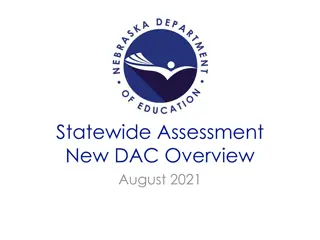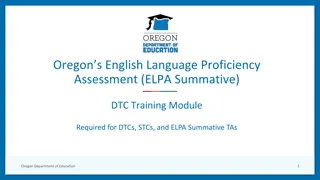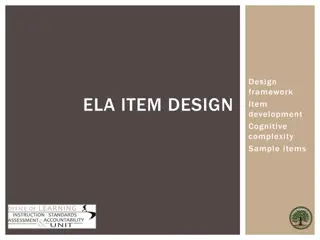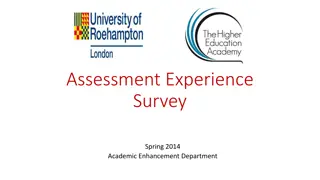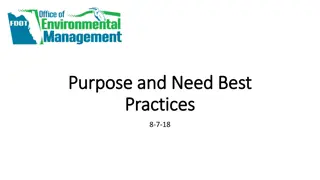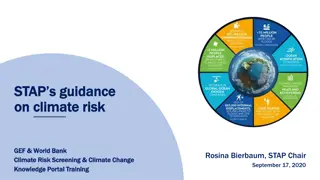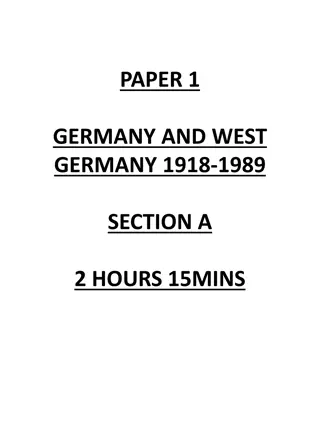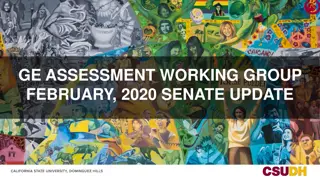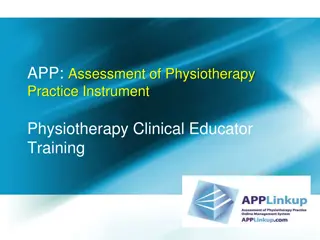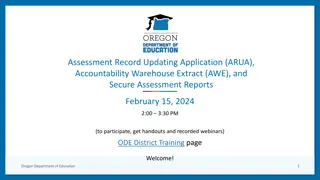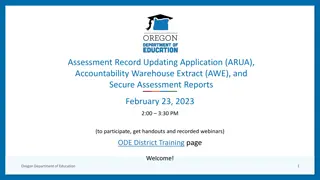Best Practices in CBA Assessment and Evaluating Students in Group Projects
This content discusses best practices in Cost-Benefit Analysis (CBA) assessment along with strategies for evaluating individual students in a group project class. It covers topics such as analyzing IMC strategies, developing IMC plans, assessing communication effectiveness, and using evaluation rubrics to measure performance. The focus is on understanding how to develop, evaluate, and improve strategic and tactical IMC plans in marketing education.
Download Presentation

Please find below an Image/Link to download the presentation.
The content on the website is provided AS IS for your information and personal use only. It may not be sold, licensed, or shared on other websites without obtaining consent from the author. Download presentation by click this link. If you encounter any issues during the download, it is possible that the publisher has removed the file from their server.
E N D
Presentation Transcript
Lois Olson BEST PRACTICES IN CBA ASSESSMENT Amy Randel George Easton Nik Varaiya John Anderson
College College- -Level BSBA (Common Goals) BSBA (Common Goals) MBA MBA Department Department- -Level Program Level Program Assessment Assessment Undergraduate: Undergraduate: ACC, FIN, FIN SVC, IS, MGT, MGT ACC, FIN, FIN SVC, IS, MGT, MGT- -ENT, MGT MKT, MKT MKT, MKT- -IMC, RE IMC, RE Graduate: Graduate: MSA, MSBA MSA, MSBA Course Course- -Level Assessment Level Assessment Level Program Assessment Program Assessment ENT, MGT- -HR, HR, College of Business Administration
MARKETING DEPARTMENT Evaluating Individual Students in a Group Project Class
EVALUATING INDIVIDUAL STUDENTS IN A GROUP PROJECT CLASS Goal 5: Understand how to develop and Goal 5: Understand how to develop and evaluate strategic and tactical IMC plans evaluate strategic and tactical IMC plans and programs and assess and programs and assess communications effectiveness. communications effectiveness. 5.1 Analyze IMC strategies and plans that include various promotional mix elements including: advertising, public relations, sales promotion, direct marketing, the Internet, and interactive methods. 5.2 Analyze an IMC plan.
EVALUATING INDIVIDUAL STUDENTS IN A GROUP PROJECT CLASS 1.Videotape an IMC class presentation 2.Instructor evaluates the presentation using rubric
EVALUATION RUBRIC DEVELOPED EVALUATION RUBRIC DEVELOPED Below Expectations (1 Below Expectations (1- -2 Pts) Aspects of background or relevant external environment variables not discussed. Research is not thorough or is missing completely. Identified target market(s) do not follow clearly from any research presented. 2 Pts) Meets Expectations (3 Meets Expectations (3- -4 Pts) Provides analysis of all relevant background including competition and external environment. Some research undertaken to support analysis. Target market(s) identified. Could be clearer how research led to target market. 4 Pts) Exceeds Expectations (5 Exceeds Expectations (5- -6 Pts) Background is comprehensively examined and assessed. Competition, external environment, and any other relevant issues thoroughly researched and discussed. Research clearly supports target market(s) choice. 6 Pts) POINTS POINTS Situation Analysis Situation Analysis Communication objectives do not flow clearly from situation analysis. One or more objective may be difficult to measure, vague, and/or not clearly distinct from Marketing objectives. Complete communication objectives presented and follow reasonably well from situation analysis. Comm objectives are generally measurable and are distinguished from Marketing objectives. Communication objectives are clearly stated and flow fully and naturally from results of situation analysis. Objectives are specific, distinct from Marketing objectives, and measurable. Objectives Objectives Basis of positioning is either missing or not presented clearly. If positioning is discussed, not clear what the connection between it and message strategy are. Message strategy is presented and positioning discussed but relationship between positioning platform and message strategy may not be totally clear. Message strategy is clearly presented and positions the product effectively. Positioning platform well- thought through and relationship between positioning and message are clear. Message Strategy Message Strategy Important elements of media strategy may be missing. No clear connection between media & message strategies. Media strategy is presented and explained. Media strategy is reasonably consistent with message strategy. Media strategy is clearly presented. Media strategy supports and enhances message. Media Strategy Media Strategy IMC plan omits one or more additional element that would contribute effectively. Appropriate public relations, direct marketing, Internet, sales promotion or support media are missing. IMC plan includes some additional elements that are appropriate. May include public relations, direct marketing, Internet, sales promotion or support media. IMC plan includes all additional elements that are appropriate (public relations, direct marketing, Internet, sales promotion, support media). Additional elements are clearly blended into positioning/message strategy. Other Plan Other Plan Elements Elements Lack of consistent message across two or more elements causes understanding of IMC to be questioned. Elements of IMC plan illustrate reasonable consistency and demonstrate understanding of the concept of IMC. The concept of IMC is clearly promoted and demonstrated through the consistent message woven throughout plan elements. Integration Integration Budget fails to clearly account for all plan items, does not support objectives, or is missing altogether. Full budget is presented and appears to support the plan s objectives. All plan items accounted for in budget. Budget carefully and fully details each plan element. Supports stated objectives and is reasonable given any existing constraints. Budget Budget Plan for measuring effectiveness of IMC plan is weak. Method choice questionable or plan is missing altogether. Plan for measuring effectiveness is presented. Choice of methods is reasonable. Measurement of all elements of IMC plan is clearly accounted for. Measurement methods are chosen/designed to produce clear results. Effectiveness Effectiveness
EVALUATING INDIVIDUAL STUDENTS IN A GROUP PROJECT CLASS 1. Videotape an IMC class presentation 2. Instructor evaluates the presentation using rubric 3. Students view the presentation of previous IMC plan and the Plan itself 4. Students individually evaluate the IMC program using the same rubric
EVALUATING INDIVIDUAL STUDENTS IN A GROUP PROJECT CLASS 1. Videotape an IMC class presentation 2. Instructor evaluates the presentation using rubric 3. Students view the presentation of previous IMC 4. Students individually evaluate the IMC program 5. Instructor can use individual student scores Assessment purposes: evaluate entire class strengths and weaknesses 6. Instructor closes loop with current class, in future terms emphasizing weak areas
EVALUATING A INDIVIDUAL STUDENTS IN A GROUP PROJECT CLASS 1. Videotape an IMC class presentation 2. Instructor evaluates the presentation using rubric 3. Students view the presentation of previous IMC 4. Students individually evaluate the IMC program 5. Instructor can use individual student scores Assessment purposes: evaluate entire class strengths and weaknesses 6. Instructor closes loop with current class in future terms emphasizing weak areas
MANAGEMENT DEPARTMENT Closing the Loop Practices in the Management Department
CLOSING THE LOOP PRACTICES IN THE MANAGEMENT DEPARTMENT Before Fall 2010: Presented data to the department assessment committee and at department meetings and asked for suggestions for improvement Fall 2010 to the present: Divided the department into subgroups based on the areas represented by goals in our department assessment plan Subgroups discussed and planned closing the loop activities specific to their area
EXAMPLES OF PLANNED CLOSING THE LOOP ACTIVITIES - MANAGEMENT DEPT. HR HR: Legislative act barring discrimination in HR - More time could be spent discussing Title VII in terms of the protected groups and protected activities covered by this law. In addition, more discussion could focus on differentiating this law from other equal employment opportunity laws. OB OB: Describe and apply leadership theories - Look for mini-cases and video simulations on leadership to use in class and for assignments. Options will be provided to instructors to consider for classroom use.
INFORMATION & DECISION SYSTEMS DEPARTMENT Continual Improvement in Assessment
WHAT PROGRESS HAVE WE MADE IN ASSESSING OUR PROGRAMS? Year Year 2007 SDSU SLO Committee Feedback SDSU SLO Committee Feedback (BSBA Oriented) - We encourage you to rethink actions verbs in your SLOs. - Develop timeline for complete program assessment - Consider re-integrating your Advisory Board Survey into your revised Assessment Plan IDS IDS Department Loop Closing Department Loop Closing *All-day retreat to review all aspects of our programs and curricula. -developed/revised program mission, goals, and objectives; -refined student learning outcomes -developed assessment schedule *surveyed Advisory Board Year Year 2008 SDSU SLO Committee Feedback SDSU SLO Committee Feedback (MSBA in IS Oriented) - We encourage you to move forward with implementation of the survey and analysis of results. IDS IDS Department Loop Closing Department Loop Closing *Began systematic assessment of MSBA *Surveyed MSBA alumni for feedback
WHAT PROGRESS HAVE WE MADE IN ASSESSING OUR PROGRAMS? Year Year 2009 SDSU SLO Committee Feedback SDSU SLO Committee Feedback Pleased with substantial improvement in both BSBA and MSBA but but - develop pool of questions that will be randomly selected for assessment of program goals within courses - develop improved rubrics so both instructors and students will understand the scale IDS IDS Department Loop Closing Department Loop Closing *Improved descriptors on rubrics to more clearly enunciate levels of achievement *Unable to develop pool of questions in time for 2010 assessment cycle. This item is highest on our priorities to address related to our assessment activities. Year Year 2010 SDSU SLO Committee Feedback SDSU SLO Committee Feedback Pleased with the improved rubrics but but get to work on the pool of questions ! IDS IDS Department Loop Closing Department Loop Closing *This will be addressed at next faculty curriculum/assessment meeting
FINANCE DEPARTMENT Closing the Loop ON Global Issues in the Finance Department
WHERE WERE FINANCE MAJORS GETTING INTERNATIONAL FINANCE CONTENT? Coverage in FIN 323 less than needed due to time constraints Department-level program learning outcomes not being achieved. SOLUTION: FIN 329 (International Business Finance) becomes a required course for all BSBA Finance majors.
SCHOOL OF ACCOUNTANCY Development of Revised Goals, Student Learning Outcomes, and Mapping for M.S. in Accountancy 2010-2011
ASSESSMENT ANALYSIS Student Learning Student Learning Outcome Outcome SLO 1: Communication Skills Prior SLO and Prior SLO and Assessment Assessment Combines 2.1, 2.2, 2.3 Assessment via 790 portfolio 2.1: 2006-07 2.2: 2006- 07/2009-10 2.3: 2007-08 No prior SLO Measurement Measurement Instrument Instrument Oral or written communication assignment Possible Courses Possible Courses 659 (Gill) 670 675 681 790 SLO 2: Group/ Interpersonal Skills Peer Evaluations for: Group project/ case Group quizzes Project/Case Exam questions 650 651 675 790 SLO 3: Ethics SLO 3.1 Assessment via Accounting Ethical Dilemma Instrument in 790 Any course numbered 650 or higher
ASSESSMENT ANALYSIS SLO SLO Prior SLO and Last Prior SLO and Last Assessment Assessment Measurement Measurement instrument instrument Possible Courses Possible Courses SLO 4: Research SLO 3.2: 2009-10 Assessment via 790 Portfolio Research memo/report 650 (Tax) 659 (Tax/Fin) 660 (Fin) 663 (Fin) 790 (Academic SLO 5: Problem Solving/Critical Thinking/ Technical Competence No prior SLO Project/case Comprehensive written exam question 651 (Tax) 654 (Tax) 659 (Tax/Fin) 663 (Fin) 670 (Fin) 675 (Systems) 681 (Managerial) Written assignment Exam questions SLO 6: Global/ International No prior SLO 659 (MacKenzie) 661 681 790
GOALS AND LEARNING OUTCOMES FOR MS ACCOUNTANCY Goal 1: Communication Skills Goal 1: Communication Skills Desired Bloom s Taxonomy level: Analysis (4) Desired Bloom s Taxonomy level: Analysis (4) SLO 1: SLO 1: Students will be able to compare, contrast, interpret, or criticize accounting and business decisions and information using professional business communication. Goal 2: Group/Interpersonal Skills Goal 2: Group/Interpersonal Skills Desired Bloom s Taxonomy level: Application (3) Desired Bloom s Taxonomy level: Application (3) SLO 2: SLO 2: Students will be able to actively participate in team decision making. Skills that represent active participation include interpersonal skills, motivation, attitude, and meaningful contributions to team decision making. Goal 3: Ethics Goal 3: Ethics Desired Bloom s Taxonomy level: Analysis (4) Desired Bloom s Taxonomy level: Analysis (4) SLO 3: SLO 3: Students will be able to apply ethical judgment and professional standards in analyzing situations and formulating accounting and business decisions.
GOALS AND LEARNING OUTCOMES FOR MS ACCOUNTANCY Goal 4: Research Goal 4: Research Desired Bloom s Taxonomy level: Analysis (4) Desired Bloom s Taxonomy level: Analysis (4) SLO 4: SLO 4: Students will be able to use relevant research tools and academic/professional literature to analyze or take a position in accounting and business situations. Goal 5: Problem Solving/Critical Thinking/Technical Competence Goal 5: Problem Solving/Critical Thinking/Technical Competence Desired Bloom s Taxonomy level: Synthesis (5) Desired Bloom s Taxonomy level: Synthesis (5) SLO 5: SLO 5: Students will be able to address unstructured problems in the areas of accounting information systems, financial reporting, or taxation. Unstructured problem solving involves using discipline-specific technical knowledge and skills to anticipate issues, formulate hypotheses, develop conclusions, or recognize the strategic role of accounting in business organizations and society. Goal 6: Global/International Goal 6: Global/International Desired Bloom s Taxonomy level: Comprehension (2) Desired Bloom s Taxonomy level: Comprehension (2) SLO 6: SLO 6: Students will be able to comprehend an international perspective and appreciate the significance of diversity and cultural differences in the global business environment.
MSA CURRICULUM MAP Based on course-level SLOs (from CBA Assessment webpage); * Based on instructor evaluation of course, course-level SLOs will be updated accordingly. Inactive course. PS/CT: Problem Solving/ Critical Thinking; TC: Technical Competence
